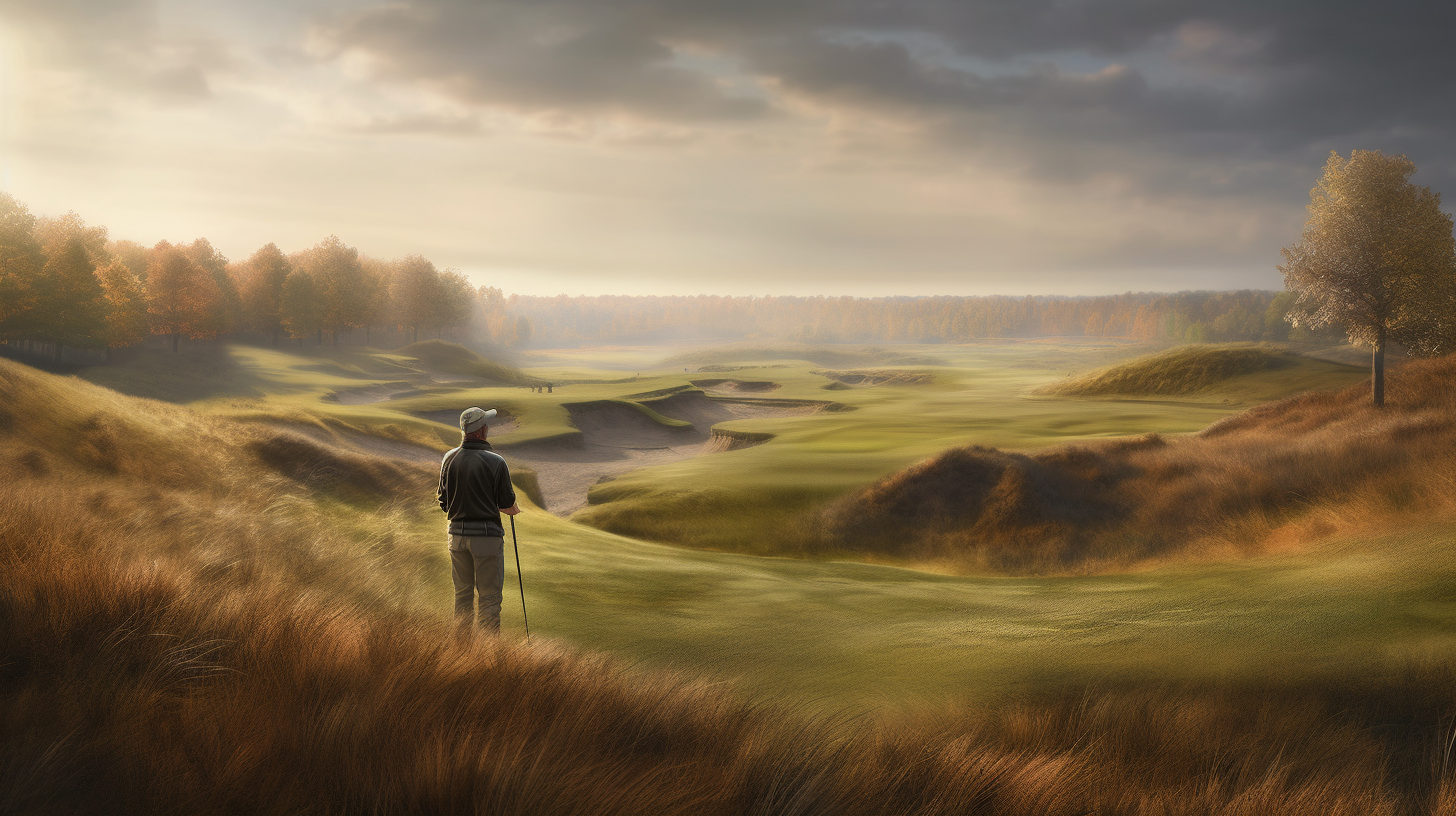Have you ever cringed in regret seeing your opening tee shot hook wildly towards the woods or get swallowed up by tall grass?
What is the rule in golf for such potentially lost shots where playing another ball might make sense?
Learning the straightforward method for legally hitting a provisional ball could spare you wasted strokes when balls go astray.
Let’s dive into everything you need to know about this handy golfing procedure.
What is a Provisional in Golf?
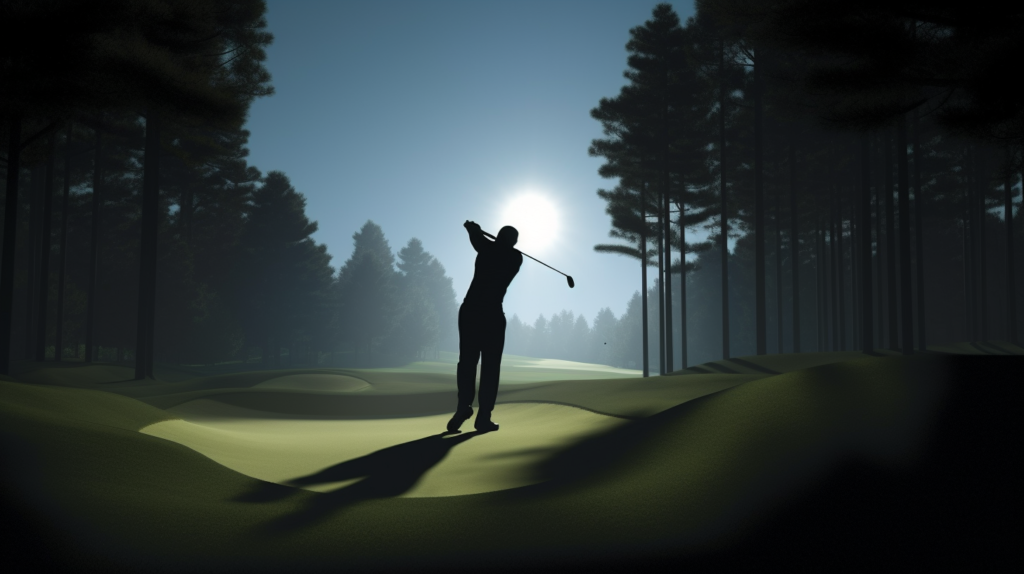
A provisional in the game of golf refers to playing an additional ball off the tee when the initial shot might have gone out of bounds or may be lost outside of a penalty area.
Playing a provisional ball saves time and allows the player to limit their penalty strokes if it turns out their original tee shot is indeed lost or out of bounds.
By playing this extra shot that is meant to provisionally be “in play” if needed, the golfer avoids having to walk all the way back to the tee box to reload, wait for other players, and then re-tee.
When to Hit a Provisional

There are two main situations in golf when a player should consider hitting a provisional tee shot after their first attempt off the tee:
If You Think Your Original Shot May Be Lost or Out Of Bounds
If a golfer cannot visually follow the path of their shot after striking the ball and believes it may have traveled into an area that would cause it to be considered unplayable.
Such as heavy woods, dense scrubs, deep hazard water, or out of the course boundaries – they have the option under Rule 18.3 to play another ball provisionally.
This way, if five minutes of searching does not yield the original ball and the player must deem it lost, they can simply continue on with the provisionally hit ball rather than having to reload and re-tee.
Knowing when you may need to use a provisional is all about evaluating if your original tee shot might have strayed into some non-playable part of the course.
For weekend golfers whose drives do not always travel straight down the fairway or find themselves in the short grass, having a backup provisional can end up saving time and penalty strokes.
When You Can Not See Where Your Ball Landed
Another instance when a golfer should strongly consider hitting a provisional off the tee is when something obscures their vision to track where their tee shot lands.
Examples would include tee shots that fade or draw behind tree lines, shots aimed over hills or rises where you lose sight of its landing, or hitting into areas of extremely thick rough or bushes.
Even shots down the middle of the fairway can sometimes plug into the soil or grass or kick into unseen hazards like creek beds or brush.
As an amateur golfer, you know your personal limitations and capabilities. Be honest with yourself if your tee shot perhaps did not travel as far as intended or if the winding shape means you can no longer spot it in the fairway.
In these uncertain situations, do not risk the penalty of having to go back to the tee if five minutes of forward searching does not find your original.
Instead, play it safe by smartly hitting a provisional that can save you that wasted time and penalty stroke if the original stays hidden.
Taking Proper Procedure with a Provisional
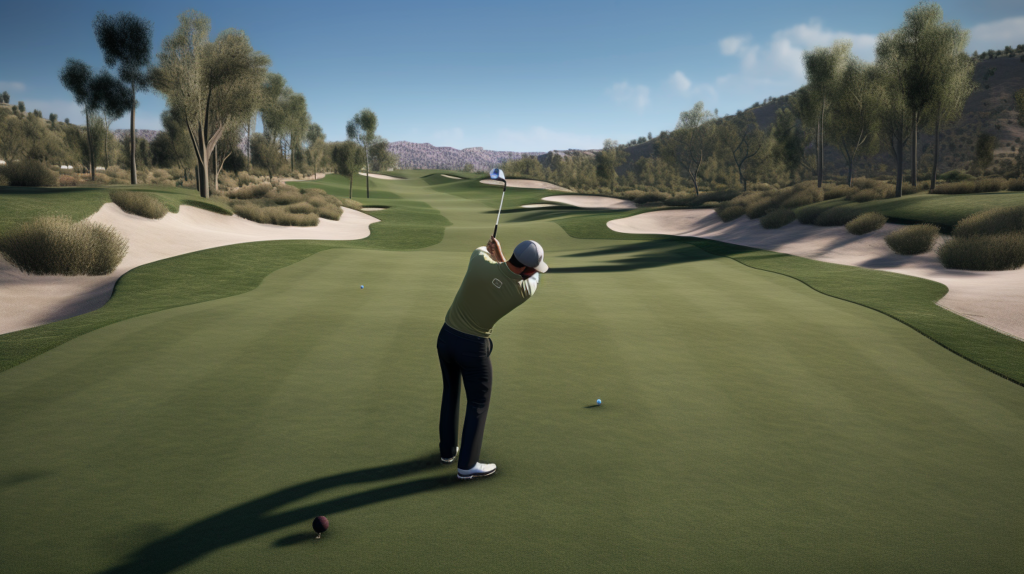
In order to correctly put a provisional ball in play during your round, you must follow several procedures laid out in Rule 18.3:
Announce You Are Hitting a Provisional Before Playing It
Before even stepping up to hit a provisional off the tee, you must state your intention to do so to your fellow competitors.
Clearly saying something like “I am going to hit a provisional ball” eliminates any confusion over which ball is actually in play at that point and which is provisional. It also starts the countdown allowable for search time should the original ball become lost or out of bounds.
Play a Provisional Ball That Is Distinguishable from Your Original
When selecting a provisional ball to hit, make sure it is conspicuously identifiable versus your original tee shot. For example, hit a ball with a different brand, number, or marking so that you, your group, and rules officials can clearly identify each one apart.
This lessens confusion over which ball is legally in play if one of them is discovered or deemed lost. Using something as simple as a line drawn on the provisional with a marker solves this.
You Can Not Play a Provisional if You Have Already Gone Forward to Search for Original
An important caveat about provisionals is that they must be played promptly after your original shot and before going forward down the hole to search.
This means you cannot walk 50 yards ahead toward the green to look for your first ball and then backtrack to play a mulligan-style re-tee.
Once you have advanced forward to search, you are committed to play that original ball if found or take a distance penalty stroke if you have to go back to the tee.
If Original Ball is Found
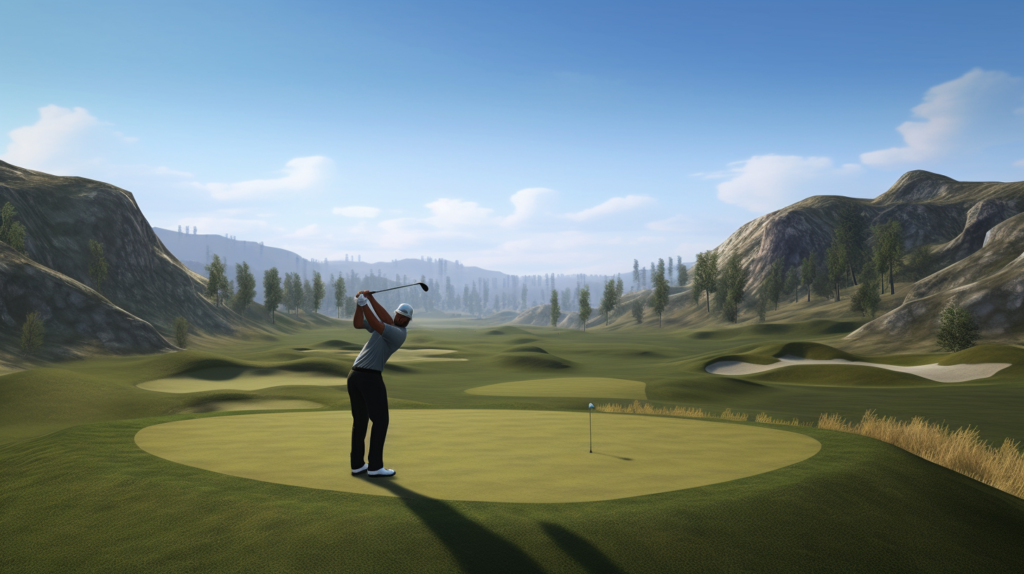
When hitting a provisional, there remains the possibility that your original tee shot is discovered within the allowable search time (three minutes is the standard duration).
If playing partners do locate your first ball inside the course margins and not in an unplayable situation like in water or out of bounds, here is the procedure:
You Must Continue Play with the Original Ball
If your original ball from the tee box is found within the guidelines of Rule 18.2a and the allotted search time, it is automatically back in play. You must continue the hole using the original ball no matter where it lies – fairway, rough, brush, etc.
The provisionally hit ball at that point is no longer in play for the remainder of the hole and is merely picked up abandoned.
If Original Ball is Lost or Out of Bounds
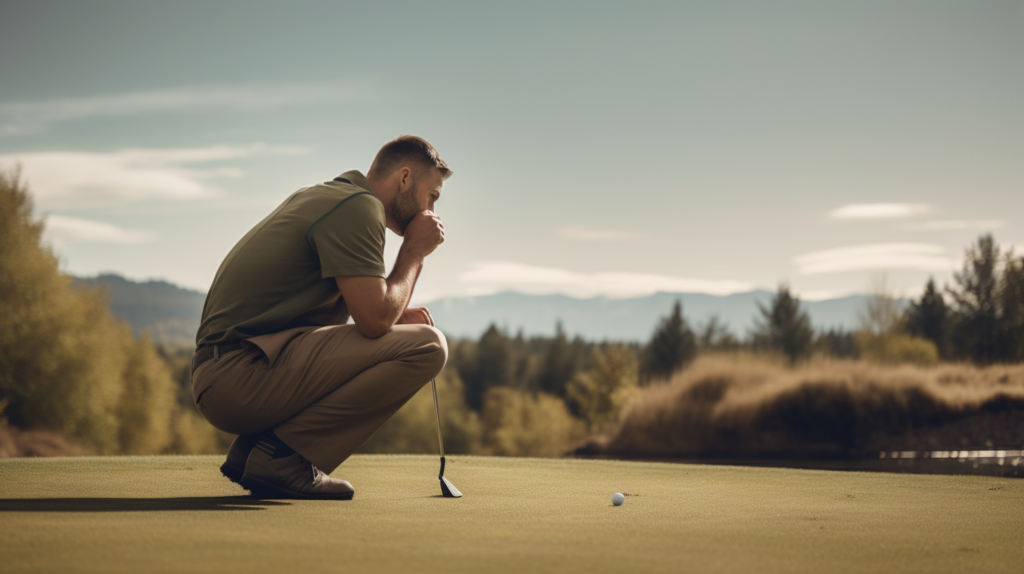
Conversely, failing to find your original tee shot within three minutes or discovering it to be out of bounds or otherwise unplayable means it is lost under Rule 18. Your provisionally hit ball now becomes your ball in play:
Provisional Ball Becomes the Ball Now in Play
If the original ball remains lost after adequate search or is identified as being out of bounds, your provisionally hit ball is now deemed legally in play. You do not have to hit another ball from the tee box as that provisional now becomes the official ball in use to complete the hole.
However, penalty strokes may still apply…
Take a Stroke-and-Distance Penalty and Play from Where Provisional Was Hit
Under Rule 18.2, failure to locate your original ball within three minutes carries a one-stroke penalty. Additionally, you must play your next stroke from as near as possible to the spot where your provisionally hit ball lay when struck.
So you take a one-shot penalty and play the provisional ball going forward.
This is why hitting that initial provisional can ultimately save penalty strokes. You only get assessed the lost ball one-shot penalty versus having to take distance relief back at the tee for another stroke.
That single stroke versus two penalty difference is key!
Provisionals Save Time and Penalty Strokes
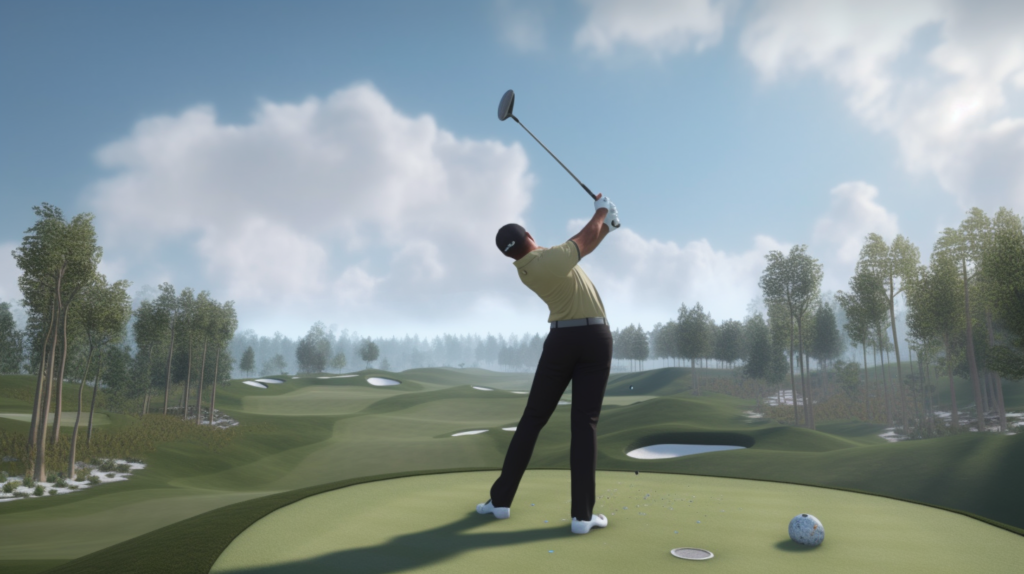
In summary, the purpose and value of provisionally hitting an extra tee shot are:
Prevent Having to Walk All the Way Back to Original Spot
Without using a provisional, a lost original ball means walking back to hit another shot from the tee box. This burns time and slows down pace of play for your group. Putting a provisional in your bag limits wasted trips.
Limit Penalty to Just One Stroke Instead of Stroke-And-Distance
Taking only a single penalty for a lost original versus two strokes for stroke-and-distance relief is huge. Effectively you still lose a shot if the original is found unplayable, but provisionals prevent that double penalty of re-teeing.
That is how they ultimately help save strokes.
Knowing these protocols, purposes, and procedures for provisionals in golf makes you an educated player. Applying these methods correctly keeps games moving briskly, minimizes penalties, and provides options from tee difficulties.
So do not be afraid to announce “provisional!” the next time an errant drive has you worried from the first tee box!
Conclusion
Hitting a provisional ball when unsure about your original tee shot is a smart golf move to avoid wasted strokes.
Understanding when and how to properly play a provisional as outlined keeps pace of play brisk, eliminates unnecessary penalties, and provides options when wayward shots veer towards trouble.
So next time an errant drive has you worried, confidently announce “provisional” and let that backup ball potentially save you time, frustration and penalty strokes!
